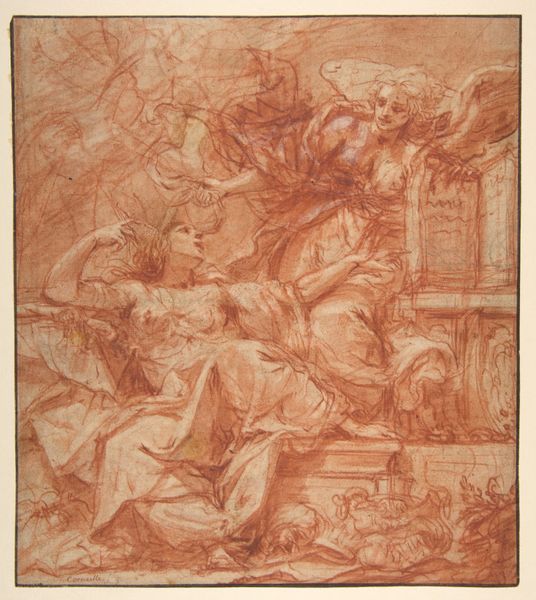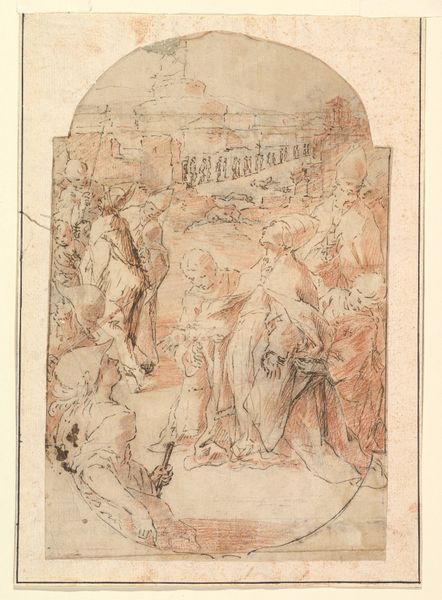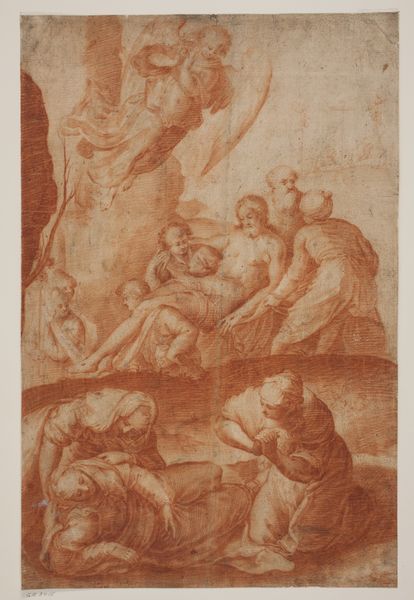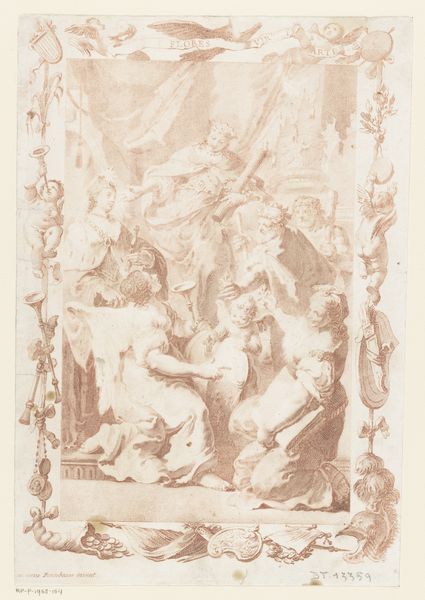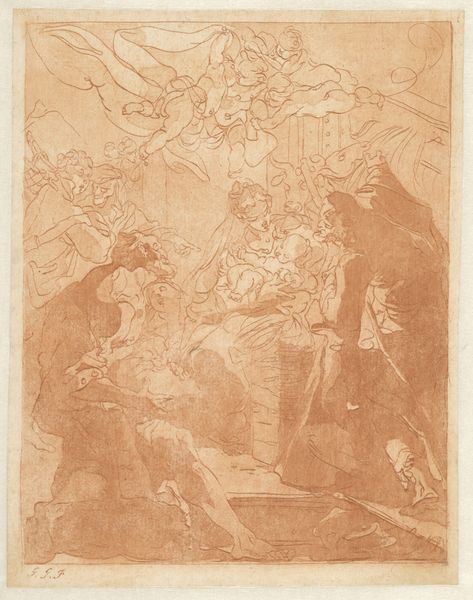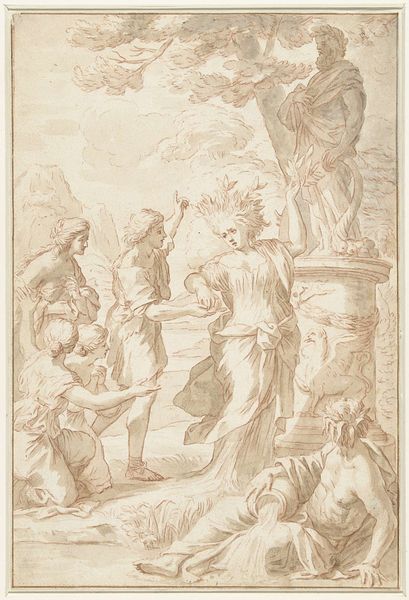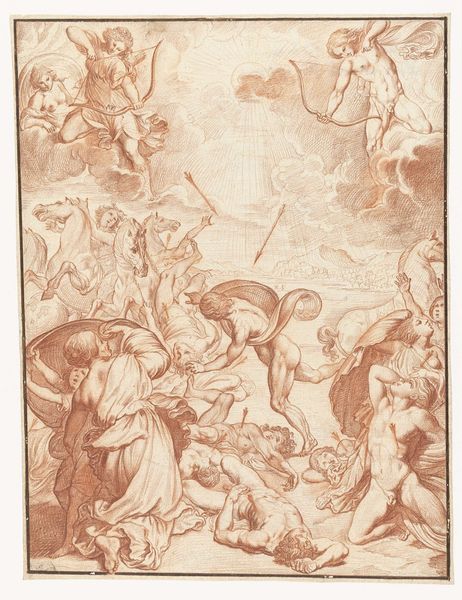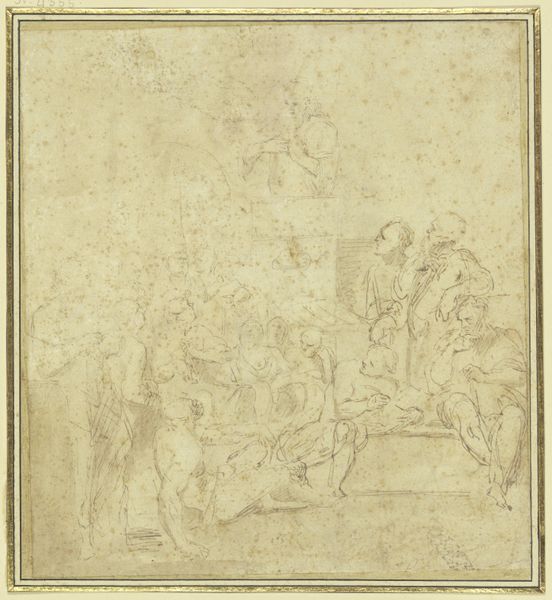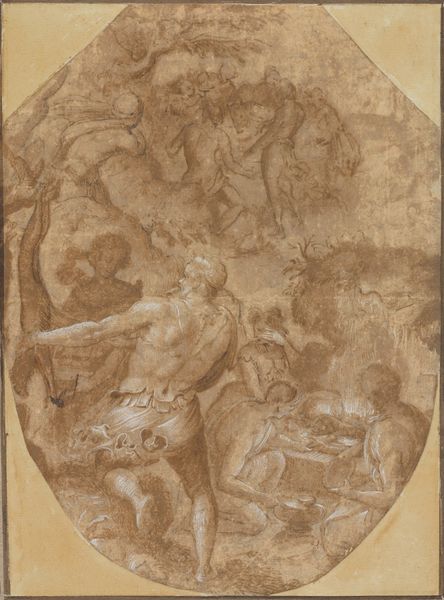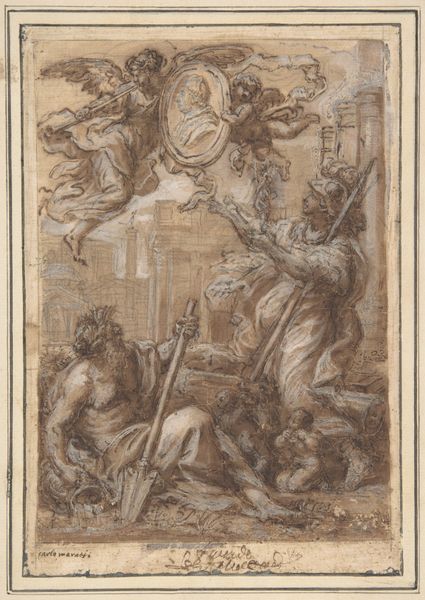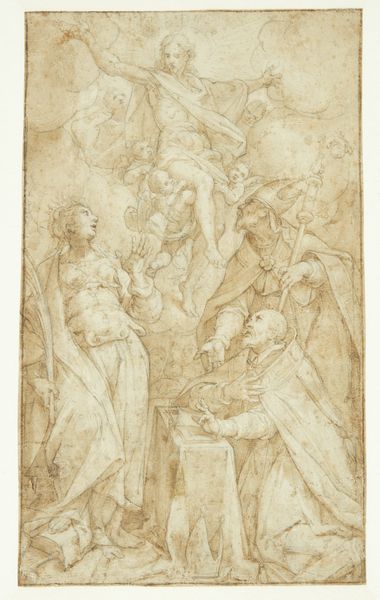
drawing, print, charcoal
#
drawing
# print
#
charcoal drawing
#
figuration
#
charcoal
#
history-painting
#
academic-art
#
charcoal
Dimensions: Sheet: 17 3/8 × 12 13/16 in. (44.2 × 32.5 cm)
Copyright: Public Domain
Editor: We're looking at "The Martyrdom of Saint Hippolytus," a charcoal drawing dating between 1753 and 1800. It's quite a dramatic scene, wouldn't you say? It almost feels like a stage production with the characters arranged in tiers. How do you interpret this work? Curator: The martyrdom scene carries potent symbolic weight. Consider the specific symbols – the instrument of death, the grieving figures, the celestial figures above. They aren’t merely descriptive, they’re signifiers within a shared cultural language, a memory of faith tested by worldly authority. Does the wheel signify simply a mode of brutal execution, or something more in its circular form? Editor: Hmmm... the cycle of life and death? Curator: Precisely! Julien invites us to contemplate not just Hippolytus’ suffering, but also the broader implications of faith, sacrifice, and divine reward. The visual layering is key here, isn’t it? The earthly struggle mirrored by a hopeful vision of heaven, creating a powerful psychological and spiritual contrast. Are the witnesses horrified, or awed, or both? Editor: I see that. It’s almost as if the figures are caught between witnessing earthly suffering and glimpsing something divine. Their expressions are hard to read though! Curator: Note the repetition of gestures too— the reaching, the lamenting. Repetition builds emphasis, focusing our attention on the core message of unwavering devotion, resilience. So much potent meaning from very little color. The drawing evokes the memory of early Christian art where symbolic communication takes precedence over literal depiction. Editor: This makes me appreciate the use of a single color so much more. I was too focused on the gruesomeness of it, but I see now how every mark serves a deeper symbolic purpose, carrying so much historical and religious baggage. Curator: Indeed, the emotional language speaks across centuries, regardless of one's own faith.
Comments
No comments
Be the first to comment and join the conversation on the ultimate creative platform.
